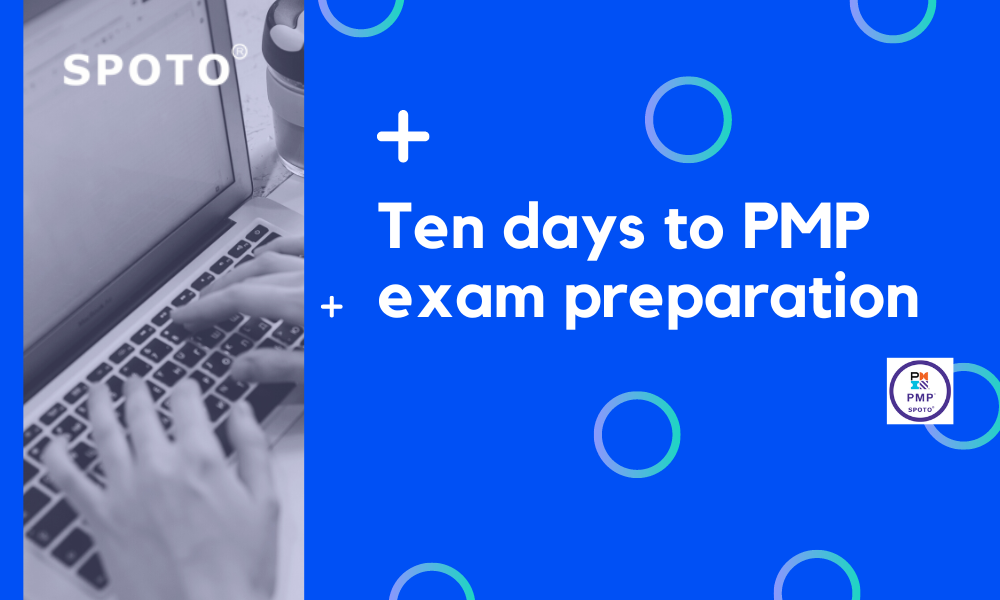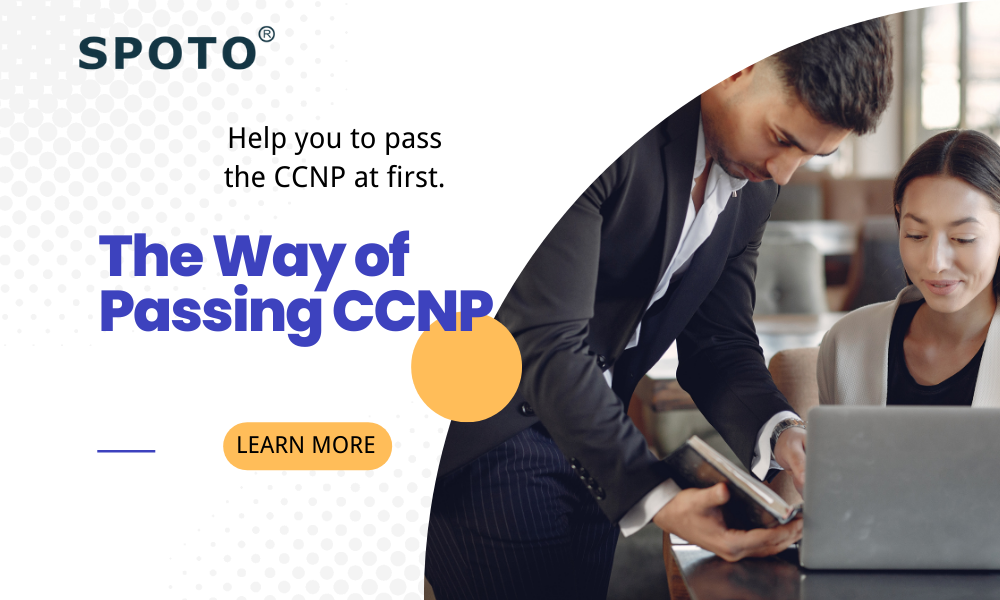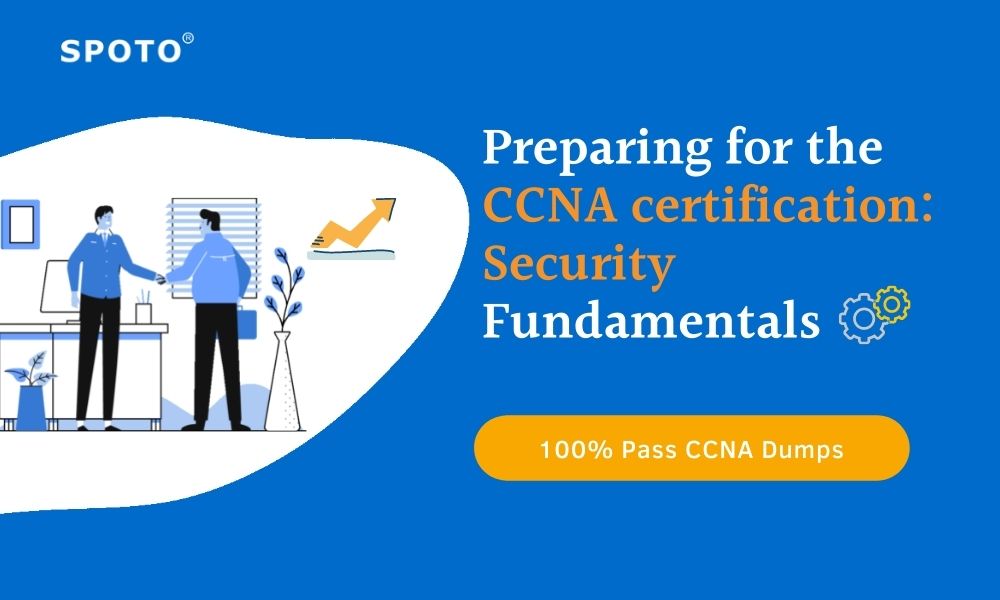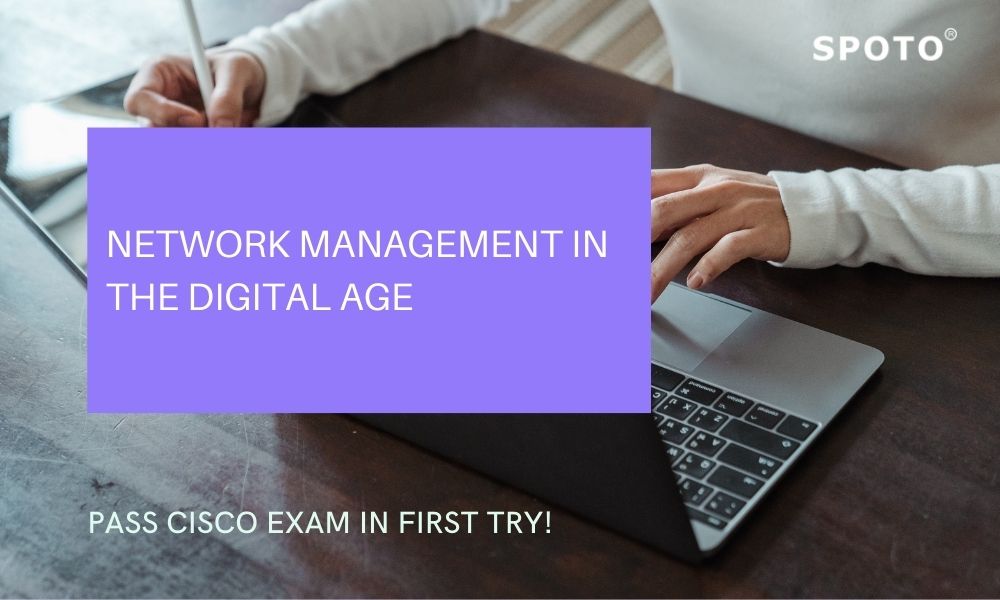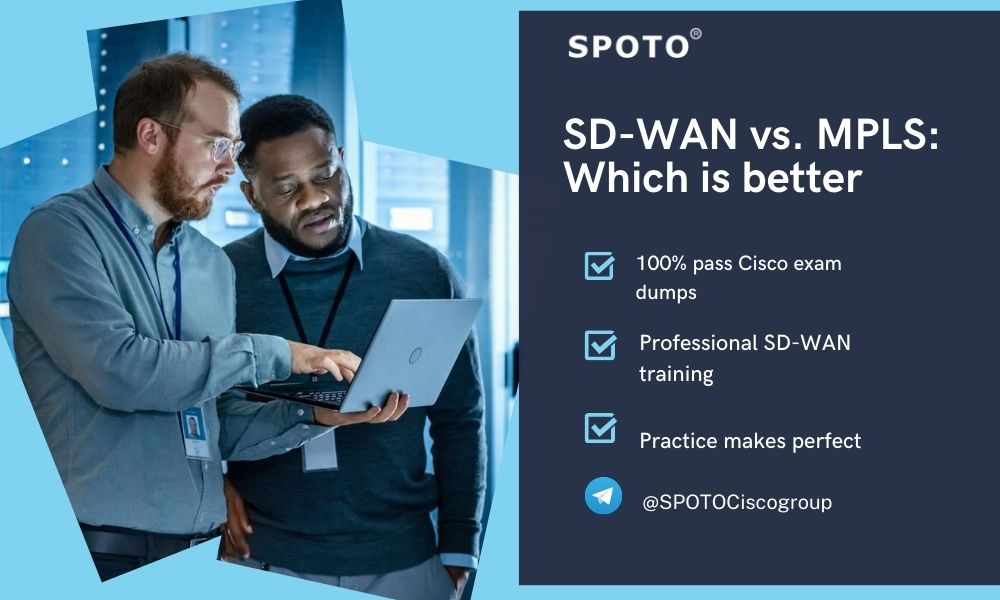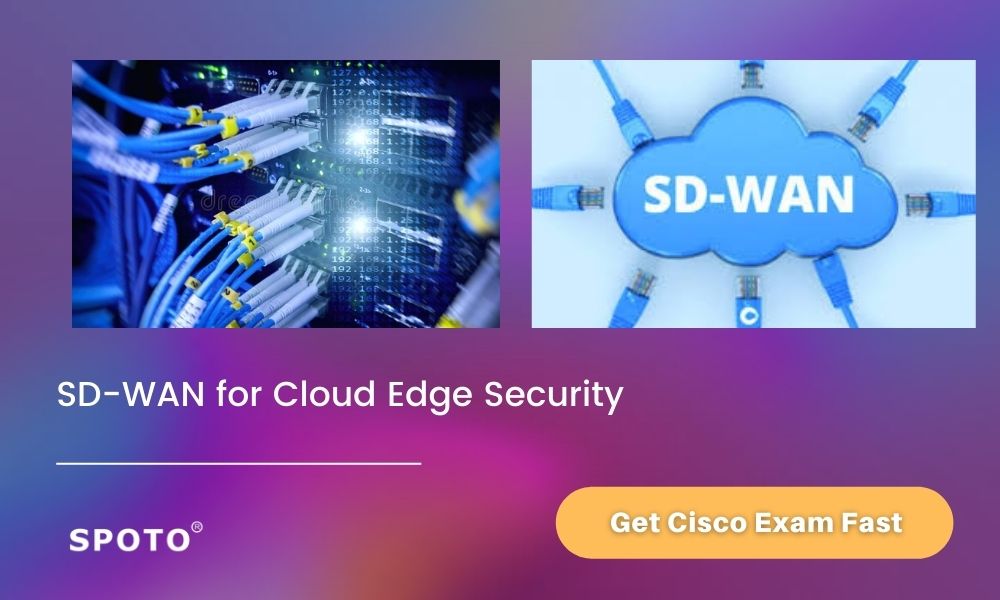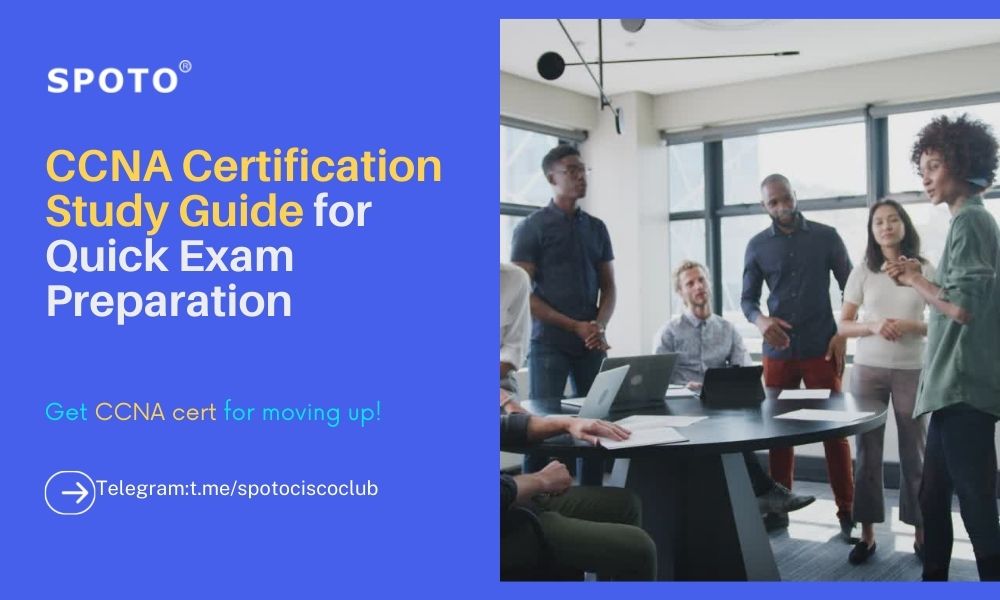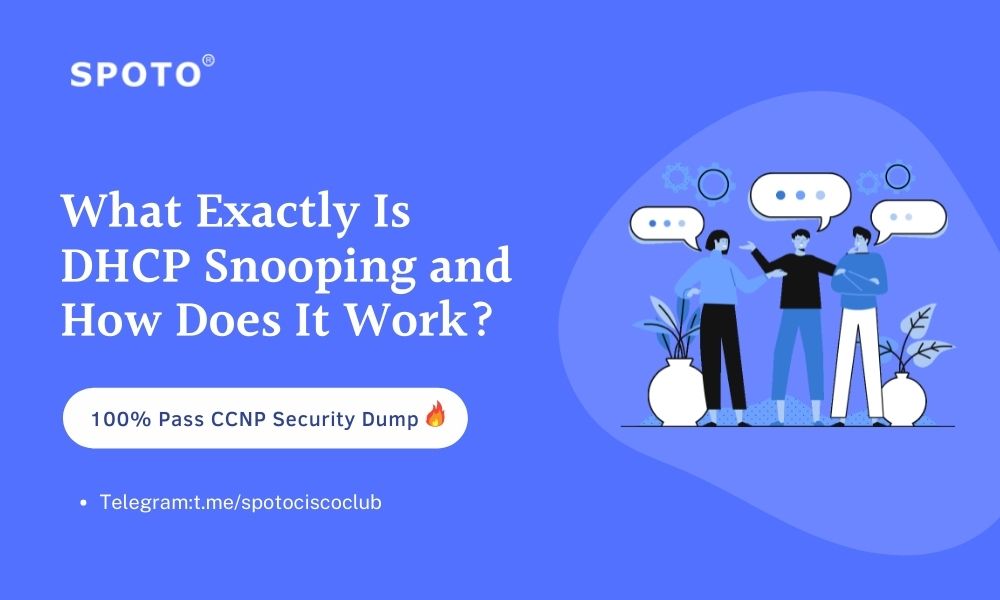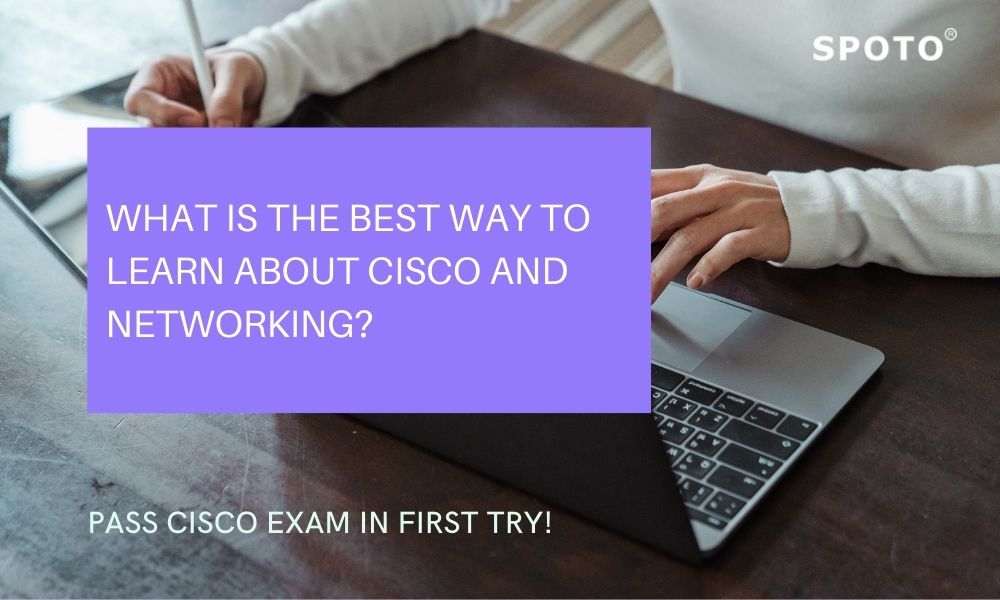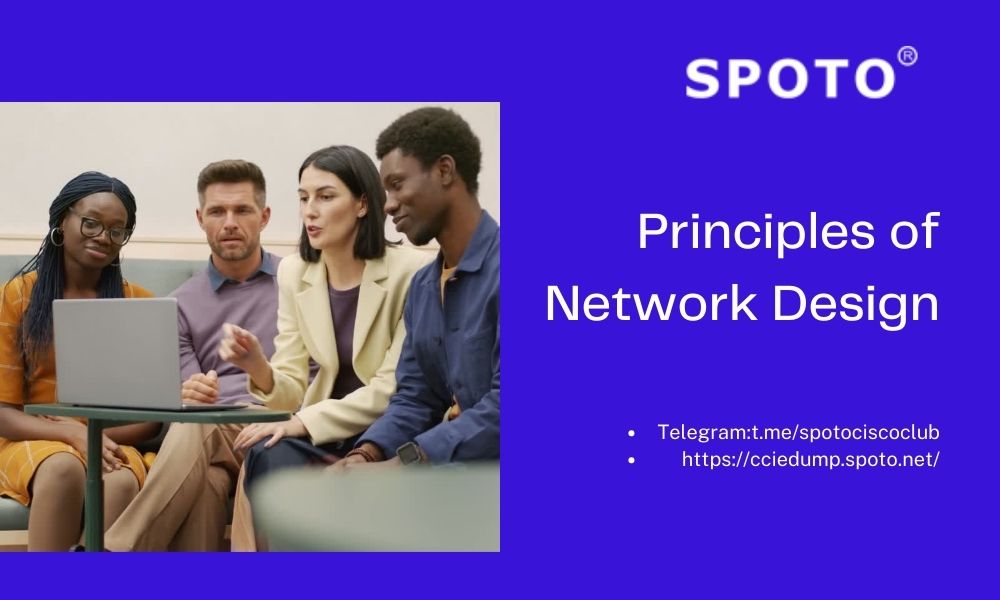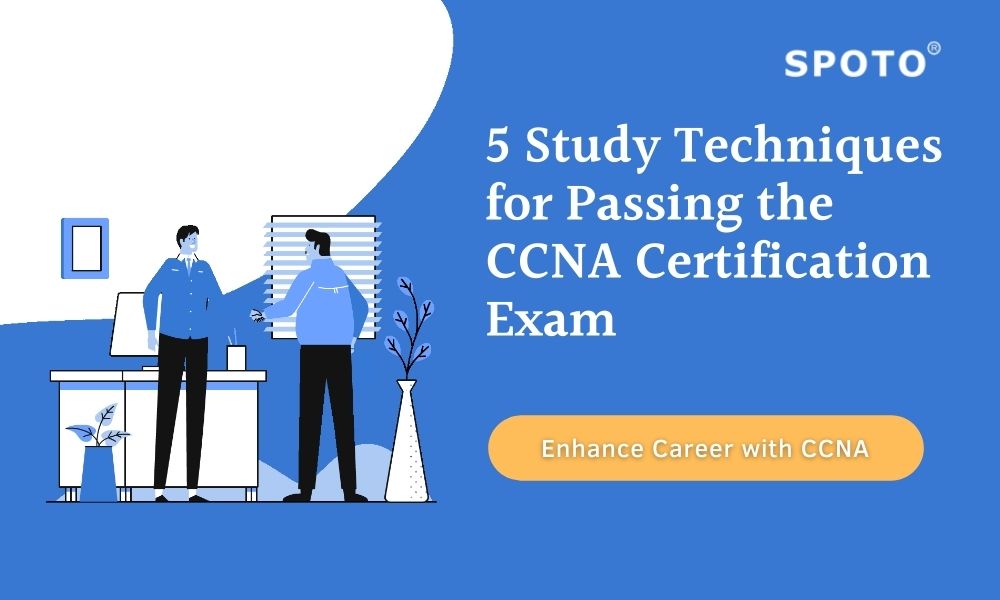-
- PMP
- 626
- 2024-01-15
How Can I Pass The PMP Exam Quickly?
You can quickly earn your PMP certification if you put forth consistent, disciplined work. In less than a month or 30 days, you can finish your studies and pass the exam.
Most people have been trained to believe that passing the exam will take at least 3-6 months. Some individuals think it takes longer than a year to figure it out. You can, however, ace the test in a couple of days. You can pass the exam in 10, 14, or 21 days with some targeted study. You might be astonished to learn that some people succeed in less than a week.
Although passing the PMP in a short amount of time is challenging, it is not impossible.
If you are dedicated and follow a structured study regimen, you will most likely pass the exam swiftly.
This article will explain the quickest technique to pass the credential test. Using this technique, you may make a study schedule and ace the test immediately.
What should we do?
To pass the exam, you must study for roughly 120 hours.
You can finish these 120 hours of study in two weeks if you so want. If willing, you can prolong your schedule to 21 days or squeeze 120 hours into ten days.
Let's use two weeks as an example to develop a plan for acing the exam quickly.
The amount of study you must complete in 14 days, or two weeks, is 120 hours. This implies that we must study for roughly nine hours each day.
You will need to put off your other everyday obligations for two weeks to focus only on your PMP preparation.
To pass the exam in two weeks, there are five steps. The first four steps require investment in a training program and study materials.
The primary strategy is revealed in the final stage, but you can't begin it until you've finished the first four. The last phase offers advice on what and how to study, as well as how to spend your day.
The following five steps will make it easier for you to ace the test.
1. Sign up for an online training course
You must complete a 35-hour training program to sit for the PMP test. Start by registering for a reputable online training course.
You will have scheduling flexibility if you take an online course. Don't think about anything else because you must be very flexible to squeeze in your studies.
Because SPOTO's "PMP® training Online" is outfitted with the most thorough study materials and the most understanding teaching groups, you can select one of their online courses.
After completing the SPOTO PMP course, you'll know all the methods that improve decision-making.
The link "https://cciedump.spoto.net/" will take you to a page where you may read more about the information you require.
You will receive all the tools and study material needed to complete the exam as part of a good training program. You can focus on your studies without worrying about the curriculum or the required readings.
2. Purchase a physical copy of the PMBOK Guide.
For PMI members, a digital copy of the PMBOK Guide is accessible without charge, and it is typically advantageous to join PMI before registering for the exam. However, as a paper copy is simpler to read and refer to, I would advise you to get a printed copy of the handbook. You may easily highlight significant passages in the text and take notes if you'd like.
3. Get a Reliable Reference Book.
Reading quality books is usually beneficial when getting ready for a test. Although the PMBOK Guide is the most OK book for exam preparation, you will also need a decent reference book to aid your research.
4. Purchase a Reliable Simulator
Before taking the exam, you should do a lot of practice questions. While you are reading through the chapters of the PMBOK Guide, you should answer some questions. After reading all the branches, you should take 3-5 lengthy tests.
Utilizing an excellent PMP simulator would be beneficial for practicing mock exams.
You can experience the natural test setting with the help of a suitable simulator. It will confirm your understanding and boost your confidence before the exam.
5. How Should I Use My 9 Hours a Day?
The most crucial thing is this. It discusses the daily routine you should adhere to as you study for the test.
PMI recommends the PMBOK Guide and the Agile Practice Guide as the primary reference volumes.
The Agile Practice Guide has seven chapters, while the PMBOK Guide has 13. About four chapters of the Agile Practice Guide are equivalent to one branch of the PMBOK Guide. Therefore, we can assume that you must read 15 chapters before taking the exam.
You also need to complete 3-5 full-length practice tests in addition to the chapters.
To finish the chapters and practice exams, use the following strategy:
in the first ten days, complete all the branches.
Aim to finish the course's 1.5 chapters per day; this will take you ten days.
Within the following four days, practice 3-5 full-length exams.
You should always start your day with the training course videos. Watch the videos about the chapters you will be studying that day. This will take you two to three hours.
After seeing the video, you should read the chapters from your chosen reference book and the PMBOK Guide. You should spend roughly 4-5 hours on this.
-
- PMP
- 682
- 2024-01-17
Ten days to PMP exam preparation
As a result, everyone advises spending 35 hours studying for the PMP exam. They fail to mention that you can adequately prepare in just ten days if you're in a time crunch or prefer to shorten your timeframe.
Pro Tip: Keep in mind that everyone is unique. This strategy might be effective for those who prefer to devote substantial amounts of time and do it more quickly.
A "slow and steady approach, extended across several weeks," will be more advantageous for others. Choose a strategy to make the most of your time investment by knowing yourself.
Reduced Time Frame
Here are some suggestions to help you study for the exam within this constrained time frame.
No matter how long you plan to prepare, you will begin precisely the same way: Make a plan and a schedule. Use your well-honed project management skills to create a detailed calendar for yourself with specified milestones, dependencies, and essential resources. By doing this, you can make the most of your ten days of study time and guarantee that you'll be prepared for the exam on time.
Practice Exams for the PMP
You must be laser-focused in your approach because you won't be playing about for weeks on end.
Consider taking a course to organize your study time and ensure you don't accidentally miss any critical information. To fill any training gaps and ensure that the course's information is reliable, you should look for a system that satisfies the project management hour requirements.
Additionally, ensure the course you select has sample exams and questions that you may do at your own pace. Bonus: If a community is present, you can use it for support.
PMP Core training
There is some expenditure required to prepare for the PMP exam. While I generally oppose a hurried approach, occasionally, "genuine" causes may call for you to take the test immediately. Perhaps your manager set this deadline because it is legally required to do so; alternatively, maybe you have found an incredibly enticing position that requires the PMP for the highest level of skill; or perhaps you registered to take the test almost a year ago but put it off. You still have 15 days before your eligibility expires.
If you're wondering how to start studying for the PMP® test, if you only have 15 days to spare, you've come to the right page. Keep quiet, use restraint, and continue reading. It will take daily effort to think about and comprehend the information to prepare for the PMP exam. Whatever the case, remember! For 15 days, anything is possible.
What follows are significant developments, cycles, and resources that, coupled with your commitment, will enable you to prepare for and complete the PMP test in 15 days (or less). I was hoping you could permit me to start with some general thoughts on getting started. However, you can go to SPOTO PMP Exam Dumps to pass your PMP Certification exam fast.
Make a Plan
Set up a primer setup right now. It's important to remember that obtaining the PMP certification during this encounter demonstrates your commitment to the project the executives are calling on, shows your legitimacy, qualifies you for higher salaries, and elevates your resume above non-PMP accreditation holders. Therefore, avoid becoming weak during this cycle.
Don't freeze until you've verified that you are eligible to take the test. Unwind. Draw a deep breath. Core desire, at that point, start clearing your schedule to allow for enough daily study time and realize that this won't be an easy path to advancement. In addition to reading A Guide to the Project Management Body of Knowledge (PMBOK® Guide), you will benefit from reading tasks others have developed utilizing the "most optimized plan of attack" approach.
By dividing your available investigation window (in this case, 15 days) by the rate for each of the test's five sections, you can create a structure for your examination period. The following table shows:
Domain-Weighted Analysis Period
1. Initialization 13% two days
2. Preparing 3.5 days with 24 percent
3. 31 percent of five days of execution
4. Keeping track of and managing 25% 3.5 days
5. A day of closing at 7 percent
You will also need to take practice exams over these 15 days, possibly every eighth day or even more frequently. In this essay, we'll discuss several fantastic counterfeit tests. Visit the PMP Examination Content Outline on the PMI® website to study the test material. If you use all of these days, you will have a total of 15 days, with one extra day that you can use to complete the survey. For more information about the PMP Exam and its preparation, please contact us at SPOTO PMP Exam Dumps.
-
- CCNA
- 937
- 2024-01-18
Cisco Certified Network Associate is a high-value IT security accreditation. A CCNA certification demonstrates that you can configure, operate, and troubleshoot routed and switched networks. It is a top associate-level credential in the IT networking area that helps applicants advance in their careers by allowing them to work for better firms and earn more money.
The critical points of CCNA
1. The CCNA certification is thorough.
The CCNA exam covers a variety of subjects and areas based on TCP/IP and spanning tree routing protocols. All of these topics must be thoroughly covered by candidates. These tests may appear impossible to pass, given the breadth and depth of the issue. Instead, concentrate on ICDN, which covers the basics of all Cisco CCNA test types.
2. It Will Be a Quick Exam.
For the complete CCNA exam, you'll only have 90 minutes. You'll have 50 to 60 minutes to answer questions from various domains. Seeing so many questions in such a short time might easily overwhelm you, regardless of how well you have prepared. Because several questions relate to real-world difficulties, the trick is to relax and recall what you learned in training and throughout your job experience.
3. Make a CCNA Exam Study Plan for Yourself:
You have a better chance of succeeding if you plan for it. This is true for any exam, including the CCNA. It would help if you devised a study strategy tailored to your own needs that can be successful. Even a simple to-do list might be beneficial.
When developing this study plan, there are various aspects to consider. Included in this are. When do you intend to sit for the test? Before picking a place and time that suits your schedule, you must first go to Pearson VUE's website and create an account. On this page, you'll also find plenty of exam-related material.
What is your time commitment? If you work or have other responsibilities, you'll need to ensure you've set up enough time to study all domains, practice tests, and evaluate simulations. Even if you have 15-20 minutes per day to practice labs, you will achieve better results than if you dedicate one full day each week to studying.
Exam preparation can be done in several ways. Self-learning helps certain people perform better. Others may benefit from a classroom setting or even an online training program that allows them to prepare while on the go. Which type of exercise suits you best? Examine which strategies work best for you based on your previous experiences, and then select your preparation method.
What is your level of familiarity with the topic? Despite having a solid knowledge base, even the most seasoned experts struggle during certification exams. Personal experiences can help you cut down on study time, but you must consider elements such as the logic of the questions and the exam length. It's possible that relying too heavily on your personal experience will prevent you from succeeding. You must be aware of the different types of questions and arrange your time accordingly.
4. The Key to Success is Practicing Exams:
Practice exams are an excellent approach to gaining a sense of the exam setting before the exam. These tests will also give you a decent understanding of how the actual test will be structured. Some candidates may only answer 5-10 questions simultaneously, yet this is insufficient. Before taking the exam, you should practice by taking several mock exams. This improves your attention, focus, resilience, and chances of passing the exam in one sitting. On the internet, there are several free question database sites. A good question database will show you the correct answer, why that answer is right, and why the other possibilities are incorrect. This is an excellent supplement to your training.
The question banks for most tests feature thousands of questions. This implies that, while practice exams will indicate how the exam will be structured, they will not reveal the precise question. As a result, don't waste time memorizing questions and answers from practice tests. Instead, find your skills and shortcomings by taking practice examinations. It's an excellent approach to see which domains you've covered and which abilities you still need to improve.
You should focus solely on solving problems and answering questions during the final weeks leading up to the exam. Look for new questions and practice papers on public internet forums and one of the many mock exam platforms. This may necessitate some research. After you've mastered the networking topics that will be tested on your CCNA certification exam, you should brush up on your knowledge.
Obtain hands-on experience
It needs both practical and academic knowledge to pass the CCNA entrance exam. Learn how to apply theoretical knowledge to real-world networking and troubleshooting issues while studying for the exam. Knowing that IP is unreliable is one thing, but troubleshooting for alternative connectivity between IP nodes is another.
You pave the way for global networking success with a CCNA certification. This certification will establish your market reputation as a networking expert. It verifies that your knowledge and expertise are superior to those of your non-certified peers. if you want to get the CCNA certification, you can ask us, there are accurate bumps for CCNA.
-
- SPOTO News
- 941
- 2024-01-18
SPOTO, a globally leading institution in the field of IT certification, has recently launched training courses and published their training website: https://www.spotolearning.com/
Some SPOTO Training features are:
Practical Hands-on Online IT Training: SPOTO’s innovative learning solution combines in-depth videos with practical, hands-on exercises to help you pass the first try exam on the 1st try.
International Certified Tutors: Partnering with the world’s leading tutors. SPOTO recruit teachers globally to find the fitness teacher. All SPOTO’s tutors are certified and professional with full of teaching experience.
Realistic Practice Test: SPOTO provides real exam questions for practice to enhance your confidence in preparing for the exam.
100% Remote, Online Learning: Learn course on your schedule. You can get access to knowledge anytime, anywhere.
100% Money Back Guarantee: SPOTO’s training course comes with a 100% money-back guarantee.
SPOTO specializes in IT certification and provides sure-shot pass material and practice tests. Over the past 18 years, SPOTO has helped 2100+ candidates achieve their goals and get their CCIE certifications, ranking 1st in the Cisco CCIE certification field.
SPOTO has been expanding the product line, from Cisco to AWS, from PMI to PRINCE2, from (ISC)² to ISACA, covering networking, project management, cybersecurity, and cloud.
So far, SPOTO provides hundreds of practice tests for various IT certifications, including Cisco, PMI, AWS, ISACA, Microsoft, CompTIA, and other hot IT certifications to advance candidates’ careers and improve their ability to get fully prepared for tomorrow’s challenges.
Why Choose SPOTO
100% Pass Verified Question & Answers – Refresh and validate practice tests to keep questions and answers up-to-date. Provide accurate answers verified by the IT experts to ensure 100% pass.
Pass with Minimum Time – Narrow the scope of exam count: SPOTO provides fewer questions, but 100% covers exam questions; therefore, you can spend minimum time preparing.
7/24 Professional Support – Get 7/24 support with a 30-minutes response to solve your doubles. Keep in touch via instant messenger or email anytime, anywhere.
About SPOTO
Found in 2003, SPOTO is dedicated to becoming an IT online learning platform worldwide, with the mission of “Change the fate by studying, Build for a better future.”
SPOTO shares its reputation in practice tests, including Cisco, PMI, AWS, Microsoft, CompTIA, Huawei, and other IT certifications with over 98% passing rate, fast pass, one-to-one service, and 24/7 customer support. That’s why SPOTO is trusted by over 550,000 candidates in over 152 countries and regions countries worldwide.
As China’s first-class online IT training organization, SPOTO cooperates with many giant Internet companies in China like Tencent, Baidu, and Alibaba. What’s more, we have won lots of awards in IT education training such as “Top Ten Influential Brands in Online Education Industry” given by Baidu, “Official IT Online Training Organization” awarded by Tencent Class, etc.
SPOTO official website:
http://cciedump.spoto.net/
https://www.spotodumps.com/
https://www.spotoclub.com/
https://www.spoto.info/
https://www.spotolearning.com/
Contact:
Email: support@spoto.net
Phone/WhatsApp: +8618344981205
-
- CCNA
- 1228
- 2024-01-17
Introduction
Security is not an afterthought in today's networks. From the start, you must understand how to create secure networks. Security must be embedded into the network's basic fabric.
The 200-301 CCNA test covers a wide range of networking subjects, including security foundations. This article explains what you need to know to pass the CCNA security fundamentals exam.
How much of the exam is devoted to security fundamentals?
Security principles account for 15% of the CCNA test content. Fundamentals is the crucial term here. Many security systems and protocols require you to understand the fundamentals. Configuration and verification information are also supplied for a few topics.
What subjects are covered in this exam section?
Under security foundations, the CCNA test covers the following important topics:
1. The fundamentals of security and the components of a security program
2. Passwords, remote access and VPNs, and access control lists are all examples of access control.
3. Security features at Layer 2
4. Security procedures for wireless networks (WPA, WPA2 and WPA3)
The following section explains what each of these things entails.
An introduction of security foundational subjects at a high level
As stated in the following sections, the CCNA covers the principles of a variety of network security technologies and protocols.
Security ideas and software aspects that are essential (including authentication, authorization and accounting)
As a network administrator, your major concern is usually ensuring that traffic can flow from point A to point B and that users can access the apps they want. However, you must make certain that programs can be utilized safely.
You need to know what security terminology like vulnerability, exploit, and threat mean. You should be aware of the available mitigation measures for preventing malicious network activity.
AAA (authentication, authorization, and accounting), sometimes known as triple-A, allows users to access systems and applications in a secure and controlled manner. While local device accounts can be used to implement AAA, using AAA servers that employ Radius or TACACS+ is a more scalable method.
Authentication
Authentication establishes a user's identity in order to provide only privileged users access to systems and applications.
Authorization
Authorization specifies what a user who has been authenticated is or is not permitted to do.
Accounting
Accounting is the process of keeping track of what an authenticated user has done. It holds users accountable for their actions while allowing them to connect to services that they have permission to utilize.
Passwords, remote access and VPNs, and access control lists are all examples of access control (ACLs)
In this section, we'll go over three crucial network security topics briefly.
Passwords
Local console, remote telnet, and SSH (Secure Shell) connections are used by network administrators to access the CLI (command-line interface) of routers and switches. Passwords should be able to be used to secure management access to the router or switch CLI.
VPNs and remote access
Any traffic sent over the Internet that isn't encrypted can be viewed by others. VPNs (virtual private networks) can be used to create a private WAN over the public internet. Site-to-site and remote access internet VPNs are covered by the CCNA.
Get more ccie id verification click there.
VPNs that connect all devices at one site to all devices at another site are known as site-to-site VPNs. Remote access VPNs link a single user to a corporate data center. Both types of VPNs have principles and protocols that you should understand without having to know about configuration and verification.
Access control lists (ACLs) define a filter that can be applied to any interface, whether incoming or outbound. The filter instructs the router or switch as to which packets should be permitted to pass and which should be rejected. ACLs are divided into two categories: standard and extended. The CCNA covers both conventional and extended ACL ideas, configuration, and verification.
Features of Layer 2 security (DHCP snooping, dynamic ARP inspection, port security)
End-user devices such as PCs and laptops have wired network connection thanks to LAN switches. To launch an attack, an attacker could get remote or even physical access to a genuine end-user device. Cisco switches provide with a number of handy capabilities for preventing network access layer assaults. We go over a couple of the tools that will be covered on the CCNA exam.
Snooping on DHCP
DHCP snooping detects and discards DHCP communications that are not related to the normal operation of the protocol. It also creates a table of valid DHCP leases that other switch functions can access. DHCP snooping is covered in both principles and configuration in the CCNA.
ARP inspection that is dynamic
ARP messages that fall outside of regular ARP operation or do not match authentic network addresses are identified by Dynamic ARP Inspection (DAI). You must be familiar with the ideas and setup of DAI's mandatory and optional features.
Port safety is paramount.
If you know which device will connect to a switch interface, you can use port security to restrict access to that device alone. You must be familiar with port security concepts, configuration, and verification.
Protocols for wireless security (WPA, WPA2, WPA3)
Anyone within range of a wireless network has the potential to access it. As a result, client authentication is required. Wireless data travels over the air and is susceptible to interception. Encryption is required to preserve data privacy and integrity.
In wireless networks, there are numerous approaches for achieving authentication and data privacy/integrity. You must choose an approach that combines several of them. This can be perplexing.
Through its WPA (Wi-Fi Protected Access) certifications, the Wi-Fi Alliance has taken on the mission of making wireless security simple. WPA, WPA2, and WPA3 are the three versions. If a wireless client device is approved for the same WPA version as the AP (access point) and its associated WLC, you may ensure interoperability (wireless LAN controller). Client authentication is supported by all three WPA versions: personal mode and enterprise mode. In the personal mode, a pre-shared key (PSK) is used, while in the business mode, 802.1x is used.
The three WPA versions should be able to be compared and contrasted. You should also be able to use the GUI to configure a wireless LAN with WPA2 PSK.
WPA
In 2003, the Wi-Fi Alliance released the first version of certification, known simply as WPA. It was encrypted using TKIP (Temporal Key Integrity Protocol).
WPA2 was released in 2004. Instead of the outdated TKIP from WPA, it used the improved AES (Advanced Encryption Standard) with CCMP (Counter/CBC-MAC Protocol) encryption methods.
WPA3 is a future replacement for WPA2 that was introduced in 2018. WPA3 employs AES GCMP (Galois/Counter Mode Protocol) for greater encryption.
Where should I spend my study time?
A high-level covering of network security with a focus on specific areas is included in the security fundamentals. Some topics require only a basic understanding of concepts. Others will require knowledge of configuration and verification. More work should be spent on topics involving configuration and verification. Learn how to use passwords to safeguard routers and switches. Know your access control lists like the back of your hand.
With port security, DHCP spying, and dynamic ARP inspection, you should be able to secure wired network access. To secure wireless network access, you must also grasp the authentication and encryption technologies available.
Conclusion
Many network security technologies and protocols are covered at a high level in security fundamentals. Some areas are given special attention, such as network device security, wired/wireless network access, and access control lists. If you want to learn more about the CCNA exam, you should get CCNA exam dumps to pass CCNA exam in the first try!
-
- CompTIA
- 1011
- 2024-01-17
SPOTO will help you easily pass the CompTIA 220-1001 exam with actual CompTIA 220-1001 Exam Dumps. Download 100 percent actual updated and latest CompTIA 220-1001 dumps questions answers with free 300-435 exam dumps updates and a success rate of 100 percent in the first attempt with high marks.
We'd like you to double-check the CompTIA 220-1001 exam that we're going to pay for. Similarly, before purchasing the CompTIA 220-1001 exam dumps, you should look them over. SPOTO provides a free CompTIA 220-1001 test demo to check the features of CompTIA 220-1001 exam dumps. For you, the demo depicts the actual CompTIA 220-1001 test questions.
QUESTION 1
Which of the following wireless networking protocols will broadcast at 5GHz frequencies?
A. 802.11ac
B. 802.11b
C. 802.11g
D. 802.11q
E. 802.11x
Correct Answer: A
QUESTION 2
Which of the following allows for the BEST cellular data connections under optimal conditions?
A. 3G
B. LTE
C. 802.11b
D. WiMAX
Correct Answer: B
QUESTION 3
A user's computer will not boot, and the screen shows the following error.no 08 found. During the last week, the computer has been performing slower than normal, and the user has been experiencing a BSOD.
Which of the following will MOST likely resolve the issue?
A. Run the DiskPart command.
B. Replace the hard drive.
C. Install more RAM.
D. Upgrade to a faster CPU.
Correct Answer: A
QUESTION 4
A user is working on a Windows laptop in a conference room that has connectivity to a large-screen TV. The user attempts to connect to the TV using HDMI and VGA cables, but video does not display on the TV.
Which of the following is the MOST likely cause of the issue?
A. The TV resolution does not match the laptop.
B. Screen mirroring is disabled.
C. The screen brightness is set too low.
D. There is a bad composite cable.
Correct Answer: B
QUESTION 5
Which of the following network types utilizes Bluetooth technology?
A. MAN
B. PAN
C. LAN
D. WAN
Correct Answer: C
QUESTION 6
A technician troubleshoots and fixes an issue. The technician then verifies the system is functional. Which of the following is the NEXT step the technician should take?
A. Establish a plan of action.
B. Document the findings.
C. Establish a theory of probable cause.
D. Question the user for more information.
Correct Answer: B
QUESTION 7
Which of the following network types is used to provide network connectivity between remote branch offices?
A. PAN
B. LAN
C. WMN
D. WLAN
E. WAN
Correct Answer: E
QUESTION 8
While on a business trip, an employee's laptop battery is draining more quickly than usual. The employee is using a 4G connection to work remotely. Which of the following battery-consuming features should the employee configure temporarily to conserve the MOST battery life and continue to work as usual?
A. Cellular
B. Airplane mode
C. Keyboard backlight
D. Screen brightness
Correct Answer: A
QUESTION 9
A laptop is being upgraded. The machine currently has 4GB LPDDR3 soldered to the motherboard and one available RAM slot. Which of the following chips should be selected to upgrade the laptop?
A. 2GB LPDDR3 SoDIMM
B. 4GB LPDDR3 DIMM
C. 8GB DDR4 SoDIMM
D. 8GB LPDDR3 DIMM
Correct Answer: B
QUESTION 10
A technician is installing and configuring a storage array on a Windows server. There are four disk slots available, and the only requirement is that the RAID array survives the loss of two drives.
Which of the following RAID levels should be used?
A. 1
B. 5
C. 10
D. 60
Correct Answer: C
QUESTION 11
A user's monitor is not displaying video. A technician checks the power to the monitor and sees the power light is lit. Which of the following should the technician do NEXT?
A. Check the video card on the computer.
B. Check the resolution is set to a known good resolution.
C. Check the video cable connection.
D. Check the digitizer of the monitor.
Correct Answer: C
Conclusion
How did you feel after taking the quiz? I'm sure you've noticed that these questions are real-exam questions than the materials provided by other vendors.
Do you want to see the entire exam dump list? If so, click here to learn more!
Dump questions: 239
Last update: July 13
In addition, our CompTIA 220-1001 exam dumps and all other IT exams are currently on special discount! Enhance your skills with CompTIA certification by using SPOTO 100% genuine dumps at a low cost!
Recommend exam study materials:
-
- Cisco
- 1065
- 2024-01-16
Take heart if you are trying to manage your network and spending hours making sure all devices are correctly set, reading through countless logs to uncover the underlying cause of difficulties, and asking why you don't have better tools.
You place a high value on your network. After all, it is the network that defines the consequences of your company endeavors in significant part. Whether you're looking to improve your company processes or your consumer experiences, you're going to need to rely on your network. The network must expand, perform, maintain security, and most importantly, be agile to react to the inevitable, and sometimes rapid, changes that occur when your projects adjust to constantly evolving ground realities.
Networks are becoming more complicated to satisfy the increasing demands of users, devices, objects, apps, and the cloud, and enterprises are having difficulty managing them to fulfill their business needs. They frequently employ numerous tools, perform manual CLI setups, and troubleshoot by attempting to recreate the situation and reading over logs. This takes too long, is prone to errors, and consumes network engineers' time with low-value tasks.
This is the first in a series of posts about various facets of intent-based networking.
The Ascension of the Intent-Based Network
As a result of these problems, enterprise networks are transitioning to an intent-based networking model. In contrast to traditional networks, where many day-to-day activities are manual, intent-based networks (IBN) automate the network's essential functionality. They take high-level business intent as input, transform it into network policies, configure network devices to carry out the policies and monitor these devices to ensure that the policies are followed. Because of this set of capabilities, IBN is suited for reaping the benefits you foresee from your digital transformation activities.
The network controller is at the center of an intent-based networking deployment. Network controllers exemplify network management's growth from simple element managers to more powerful network managers and SDN controllers. While the development of SDN controllers increased software control, automation, and programmability, it was limited in scope and manufactured to order. On the other hand, full network controllers go beyond SDN controllers and contribute to the realization of the whole concept of intent-based networking.
At the center of intent-based networks are network controllers.
Network controllers perform the necessary policy, activation, assurance, security, and integration services critical to implementing an intent-based network.
Policy: Controllers accept as input business intent and translate it into network policies. For example, the controller may understand the intention to hold a multiparty telepresence conference at 10 a.m. to implement appropriate bandwidth, QoS, and encryption procedures in the wired and wireless campus and WAN networks.
Activation: Controllers activate the underlying network infrastructure, which is made up of switches, routers, and wireless equipment, by producing the necessary configurations and provisioning the devices following the stated policy. The controller, in our case, would arrange network devices to provide the given service levels.
Assurance: Controllers examine network data to identify any problems preventing the network from behaving following policies. For example, the controller may identify a loss of video quality in a network segment, determine the root reason, and give the user the necessary remedy.
Security: Controllers have complete insight into the network's users, devices, things, and applications. This enables them to spot odd behavior or anomalies that may indicate a threat. Controllers might take precautionary measures to protect the workplace, workloads, and personnel.
Controller APIs allow for programmatic two-way interaction between the network and external business and IT applications. These APIs also enable controllers to communicate with one another to synchronize the fulfillment of shared business intentions across numerous networks. An external program, for example, may direct the controller to configure devices for an important meeting.
Conclusion
Controller-led architectures are becoming indispensable due to their range of capabilities. Organizations are discovering that they can significantly reduce manual effort, minimize security risks, save operating costs, boost regulatory compliance, and ensure that the network is continually changing, learning, and aligning with business demands. If you want to know more about Cisco knowledge, please try SPOTO Cisco exam dumps to learn the latest technology! Please try the SPOTO Cisco training course and Cisco exam dumps to help you get the Cisco certification on the first try!
-
- Cisco
- 987
- 2024-01-16
When choosing a WAN design, one of the most common questions network security architects and CISOs have is, "Should I go with SD-WAN or MPLS?" Yes, it is correct. The decision to transition to SD-WAN has far-reaching implications for businesses.
Software-defined Wide Area Networks (SD-WAN) can be less expensive, more secure, and outperform Multiprotocol Label Switching (MPLS) (MPLS). MPLS can be costly in terms of bandwidth, whereas SD-WAN protects your network against hazards that MPLS cannot. SD-WAN, in a nutshell, improves visibility, availability, performance, and flexibility. As a result, the industry has seen a surge in interest in SD-WAN during the last few years.
Adaptability is another reason fueling the surge in interest. MPLS connections are often rigid, fixed connections that cannot quickly adapt to the type of interconnectivity demanded by today's dynamic networks. Furthermore, they do not support application recognition or advanced bandwidth control for latency-sensitive applications.
SD-WAN is important in the Cisco exam, if you want to know more about SD-WAN knowledge, please try SPOTO Cisco exam dumps to learn the latest technology!
So far, everything is going well. While Fortinet realizes that there are many considerations to consider when choosing an SD-WAN solution, SD-WAN must have integrated security. HOWEVER, most SD-WAN systems do not provide the same level of security as MPLS, which is essentially a secured tunnel going via a Service Provider's secured private network. Both security and network operations must be handled through a single integrated management platform to provide a more effective strategy MPLS.
But, before we get too far ahead of ourselves, examine whether your company should make the transition from MPLS to SD-WAN in the first place.
The Key Difference Between SD WAN and MPLS
There are some fundamental differences between SD-WAN and MPLS. To summarize, MPLS is a dedicated circuit, but SD-WAN is a virtual overlay separate from physical lines. This provides MPLS with a minor advantage in packet loss avoidance but at a higher cost per megabit transported. SD-virtualized WAN's overlay, on the other hand, allows you to use connection types such as LTE, MPLS, and internet, providing additional flexibility.
If, on the other hand, you're looking for networking technology to benefit your business, you may need more knowledge. To assist you grasp the differences between SD-WAN and MPLS, we'll look at three crucial areas: cost, security, and performance. Some of these advantages are less obvious than others, and there may even be some disadvantages in some specific instances, which will be examined more. Let's get this celebration going.
SD WAN vs MPLS Cost Comparison
Previously, many businesses depended on individual MPLS connections to connect remote branches and retail sites to the central data center using a hub-and-spoke WAN topology. As a result, all data, workflows, and transactions, including access to cloud-based services or the internet, were sent back to the data center for processing and redistribution. When compared to an SD-WAN system, this is highly inefficient.
SD-WAN reduces costs by providing optimized, multi-point connectivity through distributed, private data traffic exchange and control points to provide your users with secure, local access to the services they need – whether from the network or the cloud – while also securing direct access to cloud and internet resources.
Secure SD-WAN outperforms MPLS in terms of security.
MPLS looks to offer a security advantage since it provides secure and monitored connectivity between branch offices and data centers via the service provider's internal backbone. By default, public internet connections do not offer the same level of protection.
This comparison, however, is deceptive. MPLS does not undertake any analysis of the data that it sends. This is still the responsibility of the MPLS client. Even when using an MPLS connection, traffic must be inspected for malware or other exploits, necessitating installing a network firewall and any other security services at either end of the connection.
Many SD-WAN options have the same issue. Apart from highly rudimentary security capabilities, most SD-WAN solutions still require security as an overlay solution. And for businesses that try to add protection as an afterthought to their complex SD-WAN connections, the challenge is often more significant than they bargained for.
Fortinet's Secure SD-WAN solution is distinguished by the fact that connectivity is deployed as an integrated function within an NGFW appliance, so every connection includes dynamic meshed VPN capabilities to secure data in transit, as well as deep inspection of that traffic using a diverse set of security tools – including IPS, firewall, WAF, web filtering, anti-virus, and anti-malware – that.
In terms of performance, SD-WAN outperforms MPLS.
In terms of performance, MPLS provides a continuous, constant level of bandwidth. While this may appear to be a plus, today's traffic has highly demanding performance requirements. As a result, organizations must lease an MPLS connection for their worst-case traffic load scenario, which means that expensive bandwidth is frequently unused. At other times—due to the ever-increasing volume of data generated by modern networks and devices—the MPLS connection may be constraining network connectivity.
Of fact, certain MPLS connections provide a sliding scale of connectivity. Still, even this is limited due to its inability to understand the nature of the traffic it manages and make dynamic adjustments accordingly.
To complicate matters further, while all traffic necessitates bandwidth, some applications, such as audio and video, have latency requirements that must be constantly monitored. When many applications run via the same connection tunnel, latency-sensitive traffic must be prioritized, which requires application recognition, traffic shaping, load balancing, and priority among unique connections, all of which MPLS lacks.
SD-WAN recognizes apps and may tailor bandwidth and other services to their specific requirements. It can start multiple parallel connections and then provide granular load balancing between them, as well as failover to a new connection if available bandwidth drops, as well as rate-limitless sensitive applications to ensure that latency-sensitive applications get all the room and horsepower they need – which is why the industry's most potent n powers Fortinet's Secure SD-WAN.
When MPLS may outperform SD-WAN alone
However, there are a few situations in which MPLS may be a better option than SD-WAN alone. MPLS, for example, provides a clean and secure connection that is especially desirable for certain types of data, applications, and transactions—particularly where a high level of integrity and privacy is required. However, because MPLS is an option for each SD-WAN solution, this is not a binary choice. Important transactions can still be completed via MPLS.
Furthermore, in some regions, particularly in the United States, MPLS might be prohibitively expensive. In some circumstances, replacing a public internet connection with MPLS might be relatively inexpensive. Even when MPLS is much less costly or when security or reliability considerations outweigh cost differences, SD-WAN can be built over an MPLS connection to give higher protection and functionality than an MPLS system alone. This is due to SD-increased WAN's flexibility, granular traffic control, integrated security, and the ability to use several connection strategies—MPLS, public internet, IPSec, SSL, and so on—all from the same SD-WAN deployment.
In almost every scenario, secure SD-WAN outperforms MPLS.
Fortinet's experience has shown that the benefits of an SD-WAN solution outweigh the benefits of MPLS alone. This is because today's traffic, which includes modern web applications and complicated workflows, necessitates a more flexible and dynamic connectivity environment than static MPLS connections can give.
Traditional SD-WAN systems, on the other hand, fall short when it comes to security. A Secure SD-WAN solution, on the other hand, not only adds a layer of management and flexible connectivity options for remote offices that MPLS does not, but it also adds deep and profoundly integrated security that reduces management overhead and extends visibility and control from the central IT management console or SOC solution out to the distributed WAN's very edges.
Only you know enough about your firm to determine whether SD-WAN or MPLS is better suited to your requirements. For additional information on Cisco SD-WAN features, you can check on the SPOTO blog. And if you want to grasp the updated and trended technological points, please try the SPOTO Cisco training course and Cisco exam dumps to help you get the Cisco certification on the first try!
-
- Cisco
- 800
- 2024-01-18
Cisco SD-WAN technology is already improving networks by linking branches, colocation, data centers, and cloud resources into the information fabric that connects a distributed company. However, organizations face increased security concerns, unpredictable application performance, and increasing complexity at the Cloud Edge—the confluence of the network, cloud, and security.
As branches open up to direct cloud connections and operate mission-critical apps over the internet, the old method to WAN security, which involves routing traffic back to the corporate firewall, is inefficient and costly. This is because old WAN solutions were built primarily to connect branches directly to data centers. They lack the flexibility to handle many cloud platform connections simultaneously, automatically selecting the most efficient and cost-effective ways.
Organizations require a complete and adaptable software-defined architecture to secure the WAN while simplifying distributed network management and minimizing connection costs. Every WAN device must, in effect, become software-defined and protected. As a result, we introduce a new comprehensive SD-WAN security stack that addresses critical edge security challenges. Cisco offers highly effective and scalable security for SD-WAN that is simple to manage, deploy, and maintain, allowing businesses to employ cloud services confidently. Cisco SD-WAN connects devices and people to any cloud seamlessly, enabling a superior application experience while delivering consistent unified threat prevention from branch to cloud.
Every WAN device must become software-defined and safe as applications migrate from data centers to numerous cloud platforms.
SD-WAN is important in the Cisco exam, if you want to know more about SD-WAN knowledge, please try SPOTO Cisco exam dumps to learn the latest technology!
Cisco SD-WAN Offers Four Levels of Edge Security
The typical approach to cloud edge security is to route all traffic back to the corporate data center for inspection, analysis, and filtering before forwarding it to SaaS apps or public cloud services. This option typically necessitates the deployment of pricey MPLS lines for distributed companies, which increases the scale and complexity of data center security layers. The more traffic there is among scattered branches, the more expensive and complicated it is to manage multiple MPLS connections and data center security.
The all-new Cisco SD-WAN security stack offers a comprehensive shield that operates at the edge, in the branch router, with centralized control for network and security management. The inherent security features protect data traveling to and from branch business systems and cloud platforms. The security stack also covers the entire connected company against crippling security assaults resulting from compromised internet connections and applications. The Cisco SD-WAN security stack focuses on four critical traffic profiles that are particularly important in the branch:
Compliance: Ensuring the security of sensitive data at rest and in transit, in the branch and the cloud.
Direct Internet Access: Allowing direct internet connections through network ports significantly widens the possible attack surface from external sources.
Direct Cloud Access: Allowing direct access to cloud resources and SaaS applications circumvents the company network's and data center's current centralized security (DMZ, Firewalls, Intrusion Detection).
Guest Access: Allowing guests to connect to local Wi-Fi from personal devices while keeping corporate traffic and sensitive network functions separately.
Let's look at how the security improvements we're delivering reduce the threat surface exposed by these traffic profiles while leveraging the cost reductions afforded by our SD-WAN architecture.
Compliance
Every company accepts, maintains, and processes sensitive data sets such as personally identifiable information (PII) and payment card information (PCI). Application-aware firewalls ensure that only authorized applications and users have access to sensitive data. Cisco SD-WAN security includes an embedded application-aware firewall in the branch router that learns and enforces which applications are permitted to access sensitive data types such as PCI. The SD-WAN fabric then delivers sensitive traffic to apps in the business data center or multi-cloud platforms over a secure VPN. In Cisco Intent-based Networks, intents such as "transmit sensitive data type PCI only on the IPsec VPN" can be programmed once in Cisco vManage and automatically deployed throughout the network, with Cisco vSmart Controllers dynamically segmenting traffic based on security regulations.
Access to the Internet Immediately
Before introducing SD-WAN, enterprises depended primarily on secure but costly MPLS connections to connect branches to the data center, where security services would be housed. Organizations breach the traditional centralized security barrier by allowing applications and devices at branch sites to access the internet directly. As a result, the branch is exposed to all forms of internet traffic, increasing the attack surface at the edge.
To combat these risks, the SD-WAN Security stack includes a set of embedded security capabilities such as an application-aware firewall, intrusion detection and prevention, and a cloud security layer based on Cisco Umbrella DNS. According to SecOps policies, the Cisco SD-WAN fabric automatically sends traffic to and from branches. Web security keeps a local cache of secure URLs continuously updated to reflect the most recent security danger information.
Direct Access to the Cloud
Direct cloud access enhances application QoE for cloud and SaaS apps while presenting a risk profile comparable to Direct Internet Access. Cisco SD-WAN Security employs a DNS security layer in conjunction with intrusion detection to prevent the most aggressive Denial of Service, phishing, malware, and ransomware threats that can exploit internet connections and open ports utilized by SaaS and cloud services. Furthermore, these embedded security capabilities make use of the most recent threat data from the Cisco Talos team, one of the world's most powerful commercial threat-intelligence teams.
Access for Guests
Retail businesses, for example, are eager to open up their branch Wi-Fi to customers to provide interactive methods of engaging them. Allowing guests to use the branch's Wi-Fi, on the other hand, exposes them to corporate apps, data, and services. The first step is to implement a security policy that restricts guest access, such that although internet access is permitted, all other aspects of the company network are not. Organizations must continue to prevent guests from downloading malware that could infect the branch network, either accidentally or purposefully. Cisco SD-WAN Security includes web filtering, intrusion detection, and prevention features to help prevent internet infections from spreading throughout the network. Furthermore, segmentation prevents employees from accessing the guest network, with all business data passing through IPsec VPN tunnels.
SD-WAN Makes Security Management Easier
Cisco SD-WAN offers a GUI-based workflow via the cloud-managed vManage controller to enable the new security stack capabilities and simplify management. The absence of contact Cisco ISR/ASR and vEdge routers can be powered up in the branch by non-technical staff and remotely configured based on pre-defined business intents tailored to the business's needs. Edge routers continuously monitor traffic patterns and alter connections automatically to accommodate priority business data, maintain cloud and SaaS application QoE, and proactively respond to security risks.
These advancements in our Cisco SD-WAN portfolio aid in the resolution of real-world security concerns confronting organizations today. Even better, SD-WAN comes with our DNA Essentials license, making licensing a breeze. You can expect further advancements from our technical team to help link and secure branch offices with corporate, multi-cloud, and SaaS application platforms, all while improving performance and lowering the total cost of connectivity.
For additional information on Cisco SD-WAN features, you can check on the SPOTO blog. And if you want to grasp the updated and trended technological points, please try the SPOTO Cisco training course and Cisco exam dumps to help you get the Cisco certification on the first try!
-
- CCNA
- 841
- 2024-01-18
The Cisco Certified Network Associate (CCNA) is a worldwide recognized IT certificate that verifies your professional abilities and IT knowledge required for administering Cisco networks. Businesses and organizations favor professionals with a CCNA. Therefore CCNA holders are in high demand in the job market. The CCNA is an associate-level certification that verifies your knowledge and skills in network basics, network access, IP connection, IP services, fundamentals, and automation and programmability.
Before scheduling your CCNA certification exam to enhance your professional career, you must first determine whether or not this certification is proper for you. First, you must assess and decide your career objectives, skills, and training requirements.
It is recommended that you prepare for the CCNA exam for at least four to six months. You can easily enroll in a CCNA training program or study independently utilizing the relevant CCNA certification training tools that are available.
Prepare for the CCNA Certification Exam
The following are some tips and tactics, as well as relevant resources, to help you efficiently prepare for your CCNA exam:
1. Official CCNA Cert Guide Library
The CCNA test assesses both your theoretical understanding and your operational practice skills. As a result, to pass your CCNA exam, you must be capable of using theoretical knowledge at your workplace while executing job-related duties such as troubleshooting, networking, and so on.
You must choose the correct type of learning tools to help you prepare for your CCNA exam. Cisco's CCNA Official Cert Guide Library is one of the greatest study materials for preparing for the CCNA exam.
CCENT/CCNA ICND1 100-105 Official Cert Guide and CCNA Routing and Switching ICND2 200-105 Official Cert Guide comprise the CCNA Official Cert Guide Library. This collection is the official study guide for the Cisco-recommended CCNA exam.
Both books contain several beneficial study suggestions and tactics, as well as complimentary 120-minute video tutorials to assist you in passing your CCNA certification examinations on the first try. Both books in the CCNA Official Cert Guide Library include essential information and content relevant to professional practices and contemporary technologies.
Purchase the most recent edition of the CCNA Official Cert Guide Library. The CCNA Official Cert Guide Library also includes a study plan that is specifically designed to help students manage their time for the exam and its preparation and show them how to plan out and apply an effective learning strategy. You will also receive two practice examinations to assist you in becoming comfortable with the exam format so that you are not concerned on exam day.
In addition, you will receive the CCENT and CCNA Network Simulator Lite Editions. For ICND1 and ICND2, these versions include a range of practice questions, objective-based questions, and other beneficial interactive activities and exercises.
Begin CCNA practice tests with SPOTO today and prepare for one of the most in-demand cyber certifications!
2. 31 Days Before Your Exam
31 Days Before Your Exam enables students to prepare for their exams more efficiently and practically. This resource book also aids students in developing a better grasp of the CCNA certification program and mentally preparing for the exam. Along with the official CCNA certification guide, the book is an excellent resource.
Essentially, the book covers all of the essential topics for preparing for the CCNA certification examinations. Through practice questions, interactive activities, summaries, lists, tables, examples, and illustrations, the resource book assists students in understanding and memorizing complex networking topics.
Furthermore, the book is available in a digital format, which is excellent for learners who are currently employed and do not have enough time to study from books to prepare for their CCNA exam. The digital form of the book enables students to acquire CCNA certification training for the exam at any time and from any location. The digital edition, which can be seen on a tablet, smartphone, or laptop, makes learning more convenient and stress-free for students.
3. Exam Preparation Live Lessons
Exam Prep LiveLessons by Cisco Press is yet another valuable and credible resource for CCNA certification exam preparation. Wendell Odom, the well-known author of the CCNA Official Cert Guides, created Exam Prep LiveLessons. It provides over ten hours of assistance, insightful tips, methods, and video tutorials to assist you in quickly preparing for the CCNA exam without stress or fear.
Exam Prep LiveLessons also provides practice questions to help students prepare for and cover all essential CCNA exam subjects. This video tutorial is excellent for students who want to prepare for their CCNA tests with the proper skill set.
4. Use Exam dump
SPOTO CCNA test dumps offer 100% real CCNA exam questions and answers, allowing you to learn about the different types and forms of the questions. Furthermore, no matter how diligently you read the materials and attend the prep classes, taking practice exams is the only method to judge your preparation! Begin using these CCNA dumps to pass the test on the first try!
The Last Word
CCNA covers all of the topics required to become a successful professional. The exam questions are mainly based on current industry TCP/IP practices and routing standards. Even though the course is extensive, it is not difficult to complete. You may easily pass the exam by focusing on the most important sections, such as ICDN. However, be sure that you cover all of the topics covered in the course.
It is critical to understand that you have 90 minutes to finish a maximum of 60 questions. Even for the most prepared students, this is not as simple as it appears. It is thought that the more you practice, the easier it will be to pass these exams.
You can acquire a ticket to the greatest networking positions in the world if you have the CCNA certification. The CCNA certification verifies your IT skills globally and demonstrates your professional job in the IT community. Contact our experts for more information. They will give you any extra information you require to make an informed decision about this certification. Best wishes!
-
- CCNP
- 1019
- 2024-01-17
"It is because my laptop has dynamically acquired the IP address that I can not access this network?" In your daily life, have you faced this problem? Did you suspect that the IP address was genuine? Whether the DHCP server is licensed? Otherwise, how can this be prevented? The phrase DHCP Snooping is used to help consumers avoid unlawful IP addresses in this post. In this article
What is snooping with DHCP?
DHCP Snooping is a layer 2 security solution integrated into a powerful network switch operating system that decreases DHCP traffic. DHCP Snooping prohibits unauthorized DHCP (rogue) servers that provide DHCP clients with IP addresses. The functionality DHCP Snooping performs the following:
Validates untrusted DHCP messages and filters out invalid messages.
Creates and maintains a bound DHCP Snooping database containing information about untrusted hosts with rented IP addresses.
Use the binding database of DHCP Snooping to validate subsequent requests from unreliable hosts.
Why is DHCP Snooping required?
To avoid a middle assault from a guy on our network, we require DHCP Snooping. An assailant might pretend (spoof) that it is the DHCP server and answer DHCPDISCOVER's messages before the actual server having time to respond. DHCP Snooping enables network switches to trust the port with which a DHCP server (this can be trunk) is connected, and other ports can not be confided. It also maintains a list of DHCP address bindings by inspecting communication between clients and the DHCP server to ensure authentic hosts. Other security technologies such as IPSG and DAI utilize the binding information gathered by DHCP Snooping.
To understand more about the security knowledge of the CCNP to improve your skills. You can obtain CCNP security certification with our 100% authentic CCNP security dumps and practical tests!
How does DHCP snoop?
To find out how DHCP Snooping functions, we need to find the DHCP working mechanism, which stands for the protocol for the dynamic host setup. With DHCP enabled, four steps "interact" with a network device without an IP address with a DHCP server.
DHCP Snooping usually classifies interfaces in two groups on the switch, which are trustworthy and untrustworthy ports. A trustworthy port is a port or source that has confidence in DHCP server communications. A port that does not trust is a port that does not charge DHCP server communications. The DHCP Snooping message can only be transmitted via the trusted port when the DHCP Snooping is started. It's going to be dropped otherwise.
A DHCP binding table is set up according to the DHCP ACK message during the recognition stage. It describes the host MAC address, leased IP address, lease time, binding type, and host-related VLAN number and interface data as illustrated in Figure 3. If it does not match the information acquired from the succeeding DHCP package received from unreliable hosts, it is dropped. Lease of MAC IP Address (sec) Type VLAN Interface
Entry 1 (e2-42) 10.32.96.19 (2673 dhcp) probing 10 Eth (1/22) Entry 1 (2)
Ticket 2
Admission 3
...
DHCP Snooping Prevented Common Attacks
Attack of DHCP Spoofing
DHCP spoofing happens when an attacker tries to answer DHCP requests and lists himself (spoof) as the standard gateway or DNS server. This allows them to intercept user communications before transferring to the genuine gateway or do DoS via flooding the actual DHCP server with IP address resources shocking requests.
Attack of DHCP Hunger
The DHCP hunger attack is usually directed to DHCP network servers to flood an authorized DHCP server utilizing faked MAC addresses with DHCP REQUEST. In the absence of knowing it is a hunger attack, the DHCP server will reply to all requests with IP addresses, which results in a DHCP pool depletion.
How to activate spying with DHCP?
Only for wired users is DHCP Snooping applicable. A switch having access ports in DHCP-serviced VLAN is often enabled as a security feature for the access layer. You need to set up the reliable port(s) when deploying DHCPSnooping before you enable DHCPSnooping on the VLAN you want to protect. When using the DHCP Snooping system you want. This can be done on both the CLI and the Web GUI interfaces. The CLI commands are presented in the FS S3900 Series Switches DHCP Snooping Configuration.
Conclusion
Although DHCP simplifies IP addresses, it also poses security issues. DHCP snooping can prevent the faulty DHCP addresses of the rogue server and stop the resource-exhausting attack by using all existing DHCP addresses to address these problems. Managed switches from the FS S3900 Series may fully play this function to protect your network. To protect your network. Now that you understand the DHCP snooping overview, you may visit SPOTO for further information if you want to know more about CCNP security. To help you pass the CCNP security examination quickly and easily, SPOTO also gives 100% actual CCNP security dumps and practical tests. Begin today to become the future specialists in cybersecurity!
-
- Cisco
- 945
- 2024-01-16
Most students who are new to networking struggle to learn and memorize everything they need to know to pass (Cisco) tests. When I teach Cisco's CCNA in the classroom, I explain to students how to prepare for and study for the exam.
There is a LOT to remember for CCNA, and trying to “brute force” everything into your head is not the ideal strategy.
When studying (Cisco) networking, there are two things you must learn/achieve:
• Theory: comprehend how various protocols run on routers, switches, and other network equipment functions.
• Practical Experience: You must be able to put theory into practice by configuring routers, switches, and other network devices.
You can learn about the various protocols (theory) by reading books, watching videos, or enrolling in a classroom course. Getting your hands dirty and configuring network equipment will provide you with practical experience.
In my experience, most networking students spend 80 percent of their time reading books and only 20 percent of their time doing actual work. The time spent on setups primarily wastes "copying and pasting" commands only to "see" how it works. Let me explain why this isn't a very successful method:
The model above is known as the "learning pyramid," and it depicts many learning approaches. I'm not sure where this model comes from; it's pretty ancient, and the percentages you see are most likely inaccurate. The model's goal is to demonstrate the efficacy of various research methods. There are four types of "passive" learning methods:
• Lecture
• Reading
• Audio-Visual
• Demonstration
The lecture is the most common and most ineffective form of learning. This is where the instructor stands in front of the classroom and explains things to you while you listen. Don't get me wrong: having present instructor information is critical, but it shouldn't be too long (30 minutes at most) because our attention span is limited. The following item on the list is reading, in which you use a self-study guide to grasp everything.
A pre-recorded video of an instructor explaining things to you could be audio-visual; my GNS3Vault youtube videos are an excellent example. A demonstration is when an educator teaches you (in person) how to configure various items.
All of these research methodologies are passive. It's almost like watching television; you sit or lie down and let the content flow by.
The three "active" methods are significantly more intriguing:
• Group deliberation
• Practice
• Mentoring others
A group discussion happens in the classroom when you talk with other students about various themes. We configure network equipment in practice, which Cisco refers to as "labs." I love performing labs, laboratories, labs, and MORE labs! It's important to note that I'm not talking about "copy/pasting" commands here, but rather about REALLY thinking about scenarios, designing networks, and debugging to figure out what's going on. Teaching is particularly successful because it allows you to identify your inadequacies... You can't describe something you don't understand. This is especially true when you're standing in front of the classroom, and people are asking you questions... You must be well-versed in your field.
All of these active strategies have one thing in common: they make you think! You won't be able to sit back and relax; you'll have to put your head to work!
My advice is to spend 20% of your time reading or watching instructional videos and the other 80% performing laboratories, labs, labs.
So you know you should spend the majority of your time conducting labs. Is there anything more I should know? Let me show you something about your memory that you should be aware of:
Hermann Ebbinghaus conducted memory (retention) studies in the past and developed the forgetting curve. This demonstrates how quickly we lose information if we do not repeat it. I made up the numbers merely to give you an idea of how your memory works:
If you learn something and do not repeat it, you will only recall 20% of what you learned on day one after 21 days.
The more frequently you review material, the better you will recall it. This is due to information being transferred from your short-term memory to your long-term memory.
How frequently you should review knowledge and how much you will recall is a matter of discussion and personal experience, but I believe you get the concept. It would help if you took notes when studying so that you can go over what you've learned previously.
I believe you have studied enough for the time being...
It is now time to put it into action! Study, take notes, do labs, laboratories, and more labs, and if you have any questions, ask them in the comments section! Please let me know what you think. Pass your CCNA exam with 100% pass dumps! Next, you can move to the CCNP or CCIE levels to advance your abilities and career!
Founded in 2003, SPOTO is an excellent leader in IT certification training for 18 years. We offer 100% real and valid Cisco CCNA, CCNP exam questions and answers, CCIE Lab study materials and online training courses taught by professional tutors. We have helped thousands of candidates around the world to pass their IT exams on the first try!
-
- CCNA
- 878
- 2024-01-16
Introduction
When competing for any IT job post against many applications, it is critical to demonstrate additional qualifications for the work. The best method to do so is to obtain a credential. This is because hiring managers regard them as demonstrations of talents and thus indicators of good performance.
If the profession you want to apply for is in the networking field and you're just starting, one of the certifications to get is CCNA, which Cisco awards after passing the 200-301 test. This essay will highlight the most effective study approaches for preparing for the exam. But first, let's go through the essential information concerning this exam.
Overview of 200-301 Exam
The CCNA (Cisco Certified Network Associate) credential was introduced lately to replace earlier badges at the same level. Because previous certificates were divided into different categories, the new CCNA provides fundamental competency in a wide range of networking disciplines and requires only one test to be passed — code 200-301.
Exam 200-301 validates one's proficiency in crucial networking features such as fundamental skills, access concept comprehension, IP connectivity, IP services, and automation, as well as programmability and security principles. It would be helpful to know some preparation hints to cover all of these objectives and ace the test effectively.
Study Methods for Exam 200-301
1. Investigate the goals
Fortunately, Cisco provides a list of the elements used to generate 200-301 test questions. As a result, you need first obtain the PDF that outlines these topics. After reviewing the objectives, you may begin looking for study materials and planning your preparation to cover the list items promptly.
2. Create a prep plan to follow.
Having a good study schedule allows learners to keep track of their progress. It also ensures that kids have adequate time to absorb new concepts, complete assignments, and evaluate and retain what they have learned. In addition, when developing one, you should set realistic study goals to aim toward.
3. Make use of a study guide
The official books available from Cisco Press cover the essential topics that will be covered in the test. The CCNA 200-301 study guide, which is available in volume 1 and volume 2, familiarizes you with a structured test preparation regimen. The exact certification instructions are also available on Amazon.
4. Take careful notes
You can better understand the goals of exams 200-301 if you take good notes. Preparing handwritten materials improves focus, encourages active learning, and increases comprehension and knowledge retention. It also improves your attention span, creativity, and organizational skills.
You can jot down essential notions, facts, and difficult points, among other things. Noting down the parts, you find difficult to understand will allow you to return to them later and remember to ask your trainer or fellow exam candidates about these topics.
5. Enroll in online training.
As you prepare for the test, studying thoroughly and conducting practical activities will help clear your questions. Cisco's official course takes you through the fundamentals of networking through self-study, hands-on laboratories, and lectures.
You will have obtained essential security skills and knowledge in working with IPv4 and IPv6 networks, managing devices, and configuring network components at the end of the training. This can assist you in achieving good exam results as well as attend to your future career function.
6. Put yourself to the test with practice tests.
Previous test 200-301 questions Trial exams can help determine whether you are qualified to take the assessment and learning a variety of things about it. They can assist you in recognizing question kinds, develop a response strategy, and identify your weak areas in the exam syllabus. Numerous internet platforms provide practice examinations to assist you in working towards a fantastic score.
Donwload FREE ebook here:
7. Participate in online courses
This is another tried-and-true study method that has helped countless exam applicants. Online prep courses are generally preferred because they provide a flexible learning schedule and watch video lectures an infinite number of times, which aids in information retention. You can use Cisco's eLearning course or other reputable platforms' possibilities.
8.Use the Cisco Learning Library.
Certification training is available through Cisco's Platinum Learning Library. It focuses on a variety of technological fields, including networking. By using this resource, learners will gain access to real-time content via a subscription.
9. Get enough rest and take pauses while studying for exams.
Your mental process will deteriorate if you do not get enough rest and do not obtain the recommended 6-8 hours of sleep. It can also generate stress and have an impact on your immune system. As a result, you should make it a point to rest between classes and get enough sleep at night.
To be successful with this suggestion, you must begin your exam revision as soon as possible. This will ensure that you study for a few hours each day while still allowing yourself time to rest because you need to be enthusiastic about your tasks the following day. Furthermore, if you have adequate time to study, you will avoid cramming too much material into a short period, leading to erroneous results.
Conclusion
The process of obtaining the CCNA certificate may appear simple, but it won't be easy if you do not know how to proceed. To do well on exams 200-301, you must first comprehend what it is up to. You now understand that a fantastic exam performance is about learning with the correct tools and adhering to efficient preparation procedures. In addition, if you pass the CCNA exam, you can advance to the CCNP or CCIE levels to advance your abilities and career! Apply these suggestions, study thoroughly for the exam, pass it, and achieve your desired certification.
-
- Cisco
- 1314
- 2024-01-17
Following fundamental factors contributing to a good network, design can help value-added resellers (VARs) and systems integrators avoid easily avoidable blunders. This article explains best practices for developing IP-based networks.
Many of the worst network implementations I've seen have failed to follow fundamental network design principles. Here are a few of those basic principles:
The network is the structure that makes the application possible.
If you want to verify your networking skills, you should get Cisco certifications like CCNA, CCNP, CCIE certifications to give your IT career a lift!
• The design requirements are driven by the application. The network cannot be developed without first understanding the application's characteristics and requirements.
• Network design necessitates the use of skilled professionals. The network design engineer must have extensive practical experience and a theoretical understanding of the technologies and interact with one another. Extensive practical experience should be considered a prerequisite for a design function. You cannot design a network until you have a good understanding of how it works.
The single most significant design tool is a lab. • Rather than on paper, networks are developed in a lab. Because of the intricacy of more advanced internetwork designs, a design is not valid unless it has been validated in the lab. Network modeling software is also untrustworthy. Internetworking necessitates the use of a plethora of complicated technologies that must successfully communicate with one another. In my opinion, the design of big or complex networks cannot be accurately modeled. This type of modeling is only suitable for high-level design. A lab is essential when determining specific technical details.
cisco certification verification
• Network design typically entails a variety of trade-offs. The underlying design trade-off is usually cost against performance and availability.
• Do not try to replicate the corporate structure. The network design and topology can frequently reflect the organization's business structure. While seeking to mimic this structure should not be discouraged, the network designer should never become imprisoned. A strategy like this can lead to fundamentally poor designs. Keep in mind that the design objectives are the sole crucial driving element behind the design.
• Vendor autonomy. Proprietary solutions should not be encouraged, but they should also not be avoided outright. In some cases, dominant vendors can provide the best answer.
The simplest feasible option should always be used.
• Keep things simple. Unnecessary complexity is likely to raise support costs and make the network more difficult to administer. Furthermore, an additional software with defects is probably being used whenever an overly sophisticated solution is adopted. Increased complexity can only be justified if there is a corresponding benefit or demand.
• Create each network on its own merits. Working from a set of tight and maybe overly generalized design principles or templates is not a good idea. Consider each network on its own merits and avoid just duplicating previous solutions because they appear similar.
• Stay away from the bleeding edge. For all network devices, only use mature and well-tested software and hardware.
• The essential design strategy must not be jeopardized. The architecture may need to be adaptable and change in tandem with the network. This is related to the need for a scalable design. It must not, however, be jeopardized on a fundamental basis. For example, if you are creating a three-layered WAN structure, do not add tier. By adding another layer or mixing and matching' layers, compromises and invalidates the original design. If the original design is continuously compromised for the sake of 'fast repairs,' the design will eventually erode into oblivion, and there will be no longer be a network design in place. If a network design is not fully and strictly implemented as per the original design plan, it is essentially an intellectual exercise. No changes to the original design should be made without the approval of the engineers who created it.
• A good design is characterized by predictability. A well-designed network has predictability and consistency in performance, as well as resilience and scalability.
This is what I mean when I say "building a network a thousand times"! • Create it once or create it a thousand times! If a network was not correctly built from the start, or if that design was compromised, then routine operations like network troubleshooting and adding new devices to the network become design projects in and of themselves. This is because fundamental network changes are not part of any plan unless a legitimate design is followed. As a result, they must be handled as separate projects. There is no predictability, and the impact of any modifications to the network must constantly be analyzed independently if the original plan is diverged from.
• Design necessitates a small but capable team. No single person, no matter how skilled or experienced, should be the only absolute authority in network design. Designing a network entails balancing priorities, making trade-offs, and dealing with a wide range of technological challenges at both the general and detailed levels. A design team requires people with a variety of specializations and strengths. Some people are more concerned with the big picture, while others are more concerned with the specifics.
Get CCNA, CCNP, CCIE certifications to verify your IT skills and enhance your career!
Get more cisco certification verification site click there.
-
- CCNA
- 789
- 2024-01-17
The Cisco Certified Network Associate, or CCNA, is a top IT security credential widely recognized worldwide. It is an associate's level certificate in IT networking that assists applicants in advancing their professional careers by providing them with better jobs and higher compensation. The CCNA credential validates a person's ability to set up, run, and troubleshoot switched and routed networks.
We'll go over five fantastic study suggestions that can help you prepare for the CCNA certification exam in this article:
Get some hands-on experience
Make use of appropriate study materials
Arrange for practice tests.
Just before the exam, brush up on your information.
Take a deep breath.
It would help if you first had a clear idea of why you want to earn the CCNA certification, as well as defined goals for studying and scheduling your exam. You could want to create a goal for yourself to take the exam within the next six months and plan your study time and social interactions appropriately.
1. Get some hands-on experience
To pass the CCNA exam, you'll need both theoretical and practical expertise. You should be able to apply theoretical knowledge to real-world troubleshooting and networking situations as you study for the exam. It's general knowledge that IP is unreliable, but the real challenge is determining alternative communication troubleshooting between nodes over IP.
2. Gather the necessary study materials
Gathering the appropriate study resources is an integral part of the CCNA preparation process. The latest editions of Cisco's books, Cisco CCENT/CCNA ICND 1 and CCNA Routing and Switching ICND2, are the most significant resources for studying for the CCNA exam. The "31 Days Before" series, also published by Cisco Press, is also recommended. Make sure you answer all of the practice questions and complete the lab tasks. However, before you dive into the books above, brush up on your binary math skills—you should be able to calculate in your sleep. This knowledge will assist you in passing the CCNA exam.
3. Arrange for practice tests.
Prepare for your exam by scheduling practice exams well ahead of time. Set a time limit for yourself and review what you've learned in the interim. SPOTO's free CCNA practice exams can help you better understand the CCNA exam and identify your weaknesses. CCNA test dumps feature 100% authentic CCNA exam questions and answers, allowing you to prepare for your CCNA exam quickly and effortlessly! You'll figure out where you need to improve the most.
4. Before the exam, brush up on your knowledge.
Before your scheduled exam date, we recommend that you reread the Cisco Press books once again. This can help you refresh your memory and detect anything you may have overlooked the first time around.
The last several weeks leading up to the tests should be devoted entirely to answering questions. Try to come up with new questions by looking through internet forums and other online mock exam platforms. This should be when you have a firm grip on the networking principles that will be tested on your CCNA certification.
5. Take a Deep Breath
Allow yourself some time off in the days leading up to the examinations. Try to relax and take things easy. The night before an exam, getting a good night's sleep is crucial.
2 More Points to Consider:
1. The CCNA is a comprehensive certification.
The CCNA test covers a wide range of topics, from TCP/IP studies to the most advanced routing protocols spanning trees. Exams may appear challenging to pass with so much to learn. We recommend concentrating on ICDN, which is the foundation for all Cisco CCNA exams. This necessitates candidates going through all of the topics in depth.
2. The CCNA Exam is Easy to Pass
The CCNA test consists of 50-60 questions and lasts 90 minutes. Even if you've prepared thoroughly, answering so many questions in such a short amount of time might be difficult. Keep in mind your education and experience! Many of the questions deal with real-life situations.
Conclusion
The CCNA certification will not only help you succeed in networking, but it will also allow you to advertise yourself as a networking expert with global recognition. The certification demonstrates that you are more knowledgeable than your counterparts who are not certified.
SPOTO's CCNA Certification training includes industry-relevant projects and simulation examinations, as well as high-quality, self-paced learning content produced by industry experts. The course is designed to give you everything you need to pass the exam by helping you understand concepts like LAN, VLAN, IP addressing and routing.

